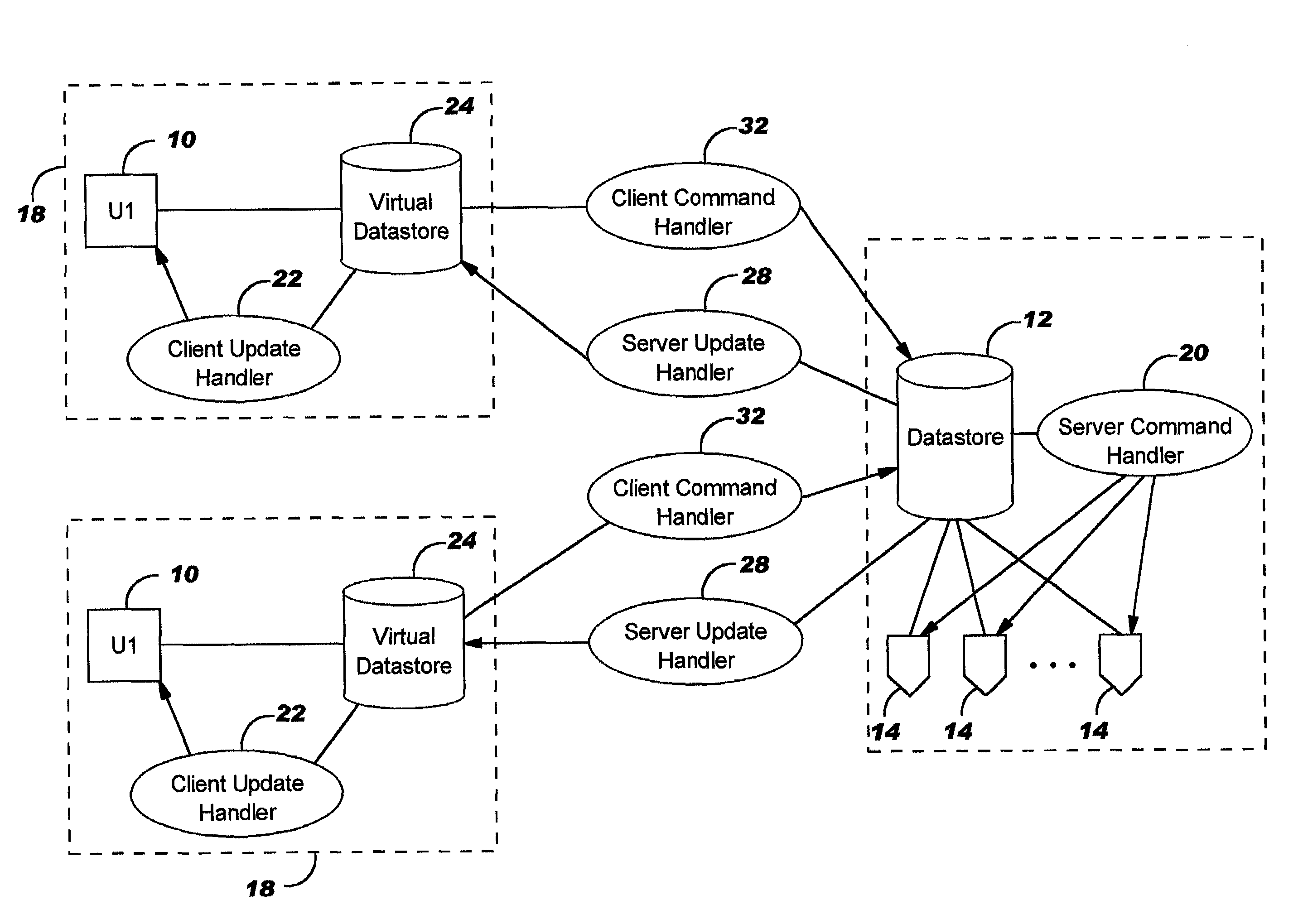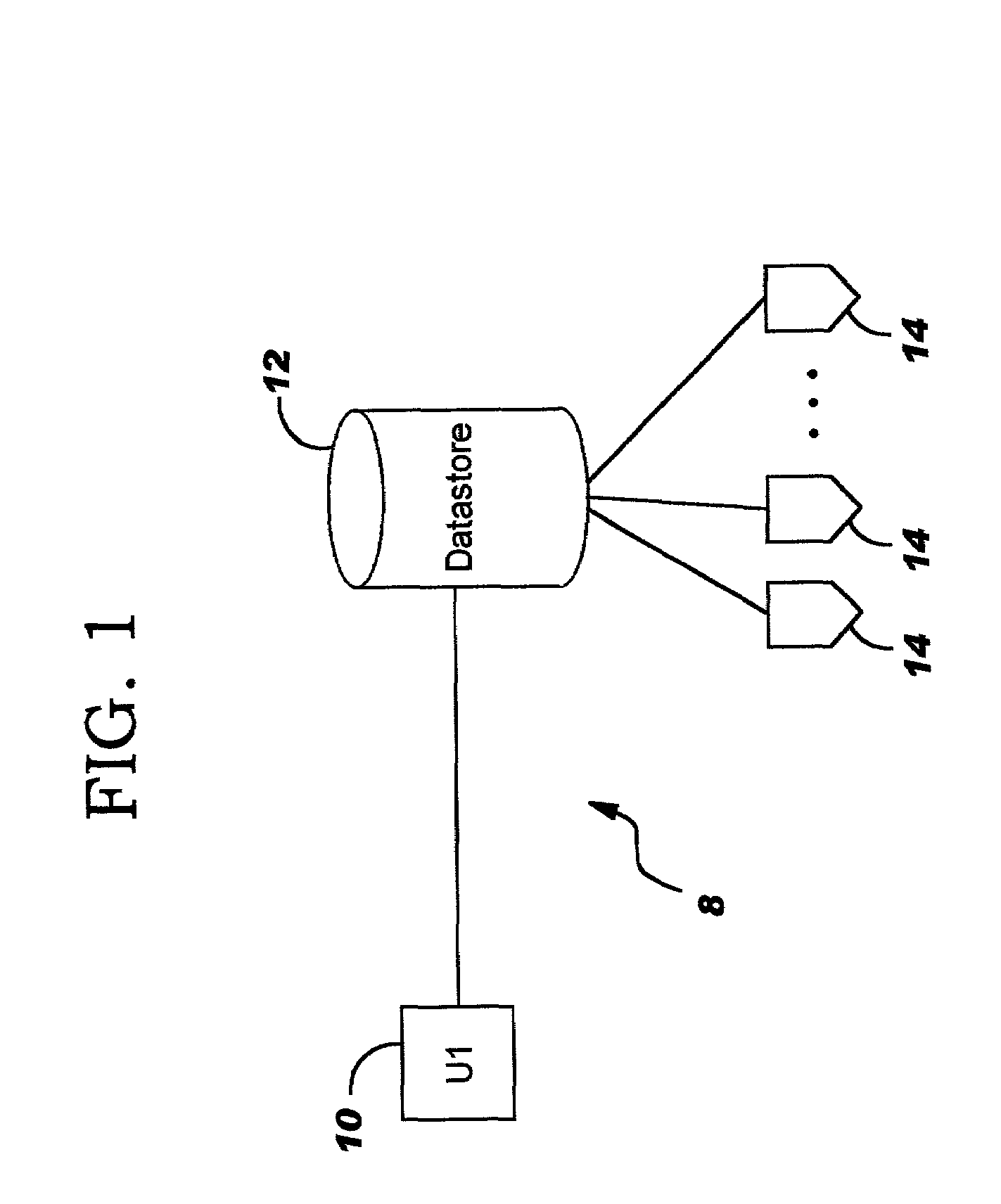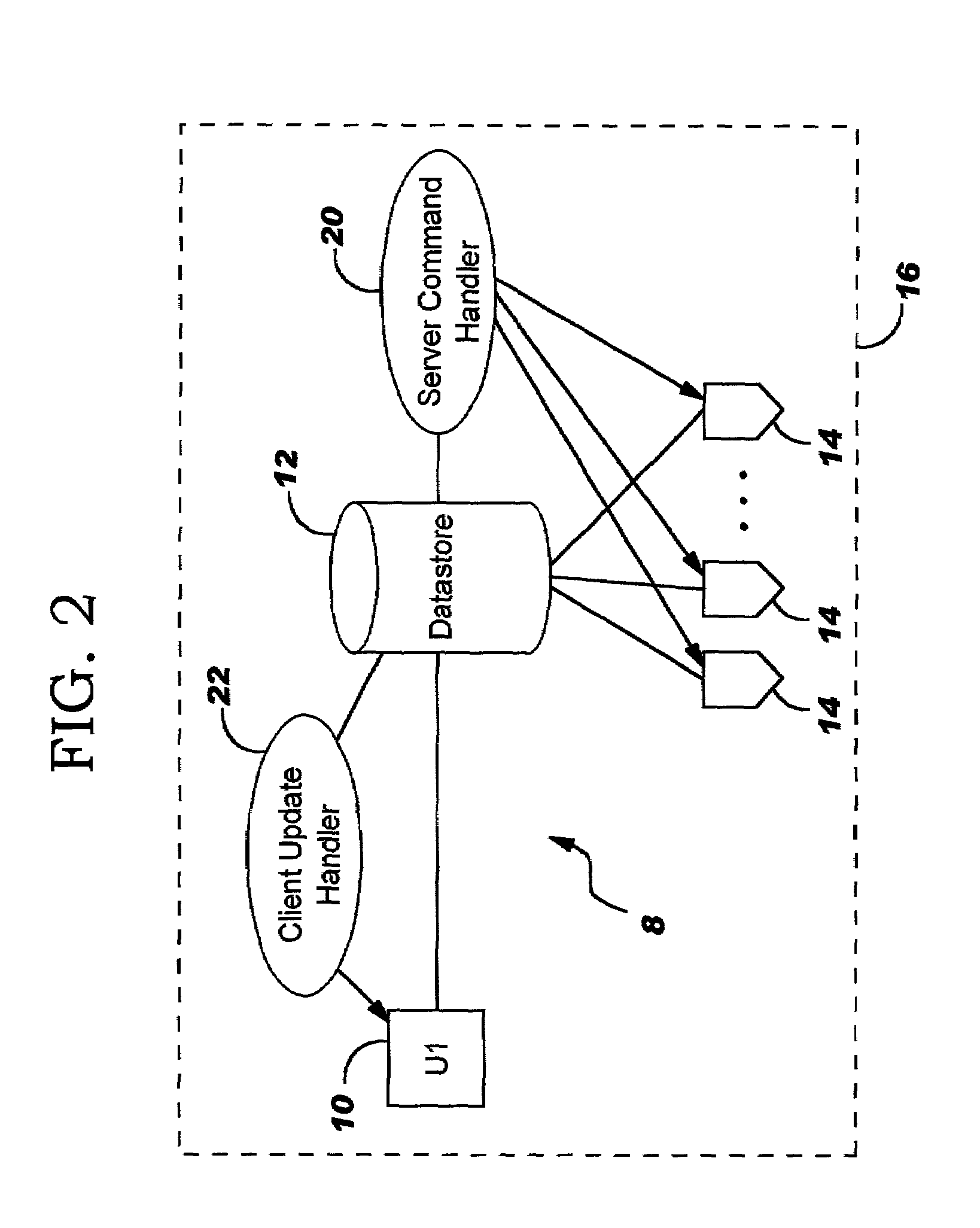Dynamic generic framework for distributed tooling
- Summary
- Abstract
- Description
- Claims
- Application Information
AI Technical Summary
Benefits of technology
Problems solved by technology
Method used
Image
Examples
Embodiment Construction
[0045]Referring now to FIG. 1, a system 8 for producing, storing and manipulating objects according to the present invention is shown. The system 8 includes a user interface (“UI”) 10 and a repository in the form of a datastore 12 connectable to an object manipulation tool set comprising tools 14. It will be appreciated that there will typically be at least one tool 14, but, as will be described in greater detail below, there may be any number of tools 14. The purpose of the tools 14 is to produce and manipulate objects within the datastore 12, as well as to produce and manipulate actual objects represented by objects within the datastore 12.
[0046]It will further be appreciated that, though an IDE is described herein as the preferred embodiment and by way of example, the system 8 being described is, more generally, a system for producing, storing and manipulating objects. Thus, there are many other possible embodiments of the system 8, which fall within the scope of this invention, ...
PUM
 Login to View More
Login to View More Abstract
Description
Claims
Application Information
 Login to View More
Login to View More - R&D
- Intellectual Property
- Life Sciences
- Materials
- Tech Scout
- Unparalleled Data Quality
- Higher Quality Content
- 60% Fewer Hallucinations
Browse by: Latest US Patents, China's latest patents, Technical Efficacy Thesaurus, Application Domain, Technology Topic, Popular Technical Reports.
© 2025 PatSnap. All rights reserved.Legal|Privacy policy|Modern Slavery Act Transparency Statement|Sitemap|About US| Contact US: help@patsnap.com



